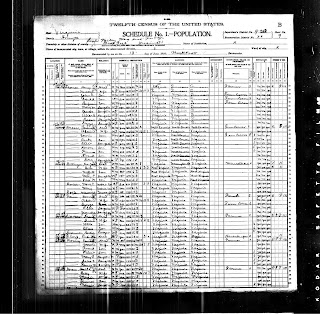This following information provided with permission by Robert W. Baird:
http://www.genfiles.com/legal/MiddleNames.htm
A Brief History of Middle Names
The use of two given names – a first name and a middle name – was essentially unknown in Europe until the late Middle Ages, and even then the practice was limited to a few distinct cultural groups. Middle names among English-speakers were nonexistent until the mid-1600s, remained quite rare for another century or so, and did not become common until well after the American Revolution.[1]
Middle Names in the Southern Colonies
Among the British stock of the southern colonies middle names were rarely bestowed on children until after the Revolution and did not become customary until the mid-1800s.During the 17th century, fewer than one in a thousand male Virginians of British stock carried a middle name.[2] Studies of public records in several Virginia counties suggest that parents gave their children more than one name so rarely that the practice was essentially nonexistent.[3]
Middle names began to find favor among the wealthy in the mid-1700s. Aristocratic families increasingly began giving their children two names, so that by the time of the Revolution a quite small but noticeable proportion of southerners carried middle names, mainly those from upper class families. A study of the births and baptisms recorded in Virginia’s Albemarle Parish Register shows that about 3% of children born between 1750 and 1775 were given middle names.[4] Among the upper classes the occurrence of middle names was more prevalent, but not common. Only three of our first seventeen presidents carried middle names, for instance.
The practice did not really catch on with the middle class until well after the Revolution, and became increasingly common within a generation or two. Although only a small percentage of children born around 1800 were given a middle name, it had become customary by the time of the Civil War. By 1900 nearly every child born had a middle name. In fact, the enlistment form used in World War I was the first government form to provide space for a middle name – a reflection of the assumption that nearly every soldier had one.
Sources of Middle Names
Initially, middle names tended to be lineage-related. When the practice first arose among the aristocracy these names were typically drawn from within family. One study of aristocratic families showed that three-quarters of the middle names bestowed in the 1700s and over half in the early 1800s were taken from inside the family.[5] The maiden names of mothers and grandmothers were particularly popular. But they sometimes went further afield; John Quincy Adams, the first President to bear a middle name, was named for a maternal great-grandfather.By the time the middle class adopted the custom a generation or two later, lineage names were still popular but most children were given the names of unrelated persons. The single most popular namesake of children born in the early 1800s was George Washington -- which single-handedly accounted for the significant increase in the popularity of the name “George” in the 19th century. By the time middle names became the norm, the proportion of lineage-related names had declined significantly, and the middle name was often just a second forename, with little or no lineage-related context.
Exactly why middle names suddenly became popular within the space of a few generations is not completely clear. To some extent it may simply have been a social trend that eventually became the norm. But it must have been encouraged by its obvious practicality. With increases in population density and the size of extended families, the incidence of multiple persons in the same vicinity carrying the same first and last names eventually became quite common. Distinguishing among several persons of the same name became, for the first time, a practical problem. Whatever the driving forces, the custom eventually became just that: a custom.
For genealogists, middle names not only help us differentiate among similarly named people, but they can provide lineage clues as well. But we need to be cautious. Americans not only named their children after relatives, they also honored friends, politicians, military heroes, religious leaders, and even distant (but often wealthy) relatives. This is obvious when a child was given a name like George Washington or John Wesley, but perhaps not so obvious when a child was named after Lorenzo Dow, Seaborn Jones, or Furnifold Green.[6]
Before concluding that a child’s name is lineage-derived, it’s best to research the names of regional and local ministers, politicians, and military men. Even then, people did name children after close friends and those from whom they curried favor.
Mutation into Uniquely American Names
One interesting result of the movement to name children after popular or admired figures is that by the mid-1800s we begin to see Americans using given names that were unknown in Europe. Uniquely American names like Jackson, Columbus, Lee, Jefferson, Wesley, Luther, Washington, and the like were clearly derived from honorific naming practices.[1] By the 15th century, Germans were giving their children two names: a spiritual name (usually a favorite saint) and a secular name (the name by which the child was known).
[2] In my own genealogies, I can identify two within the same family. Thomas Vicesimus Ivey, born perhaps 1625, was the twentieth child (Vicesimus is Latin for “twentieth”) and the second son in the family to be named Thomas. His grandson Robert Smith Ivey, born just after the turn of the century, was named for his maternal grandfather.
[3] Surry County’s records, which are unusually complete for the latter part of the 17th century, record only one person who used a middle name.
[4] The author’s own study, unpublished as this is being written.
[5] Kulikoff, p250.
[6] Lorenzo Dow was a famous itinerant Methodist preacher and author, Seaborn Jones a famous lawyer and early Georgia politician, and Furnifold Green was a military figure in central North Carolina who contributed his name to several local children.
Copyright © 2001-2007 Robert W. Baird, All Rights Reserved

















